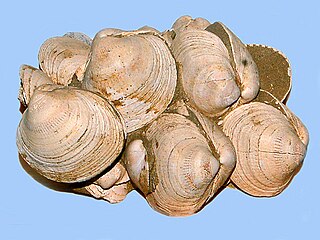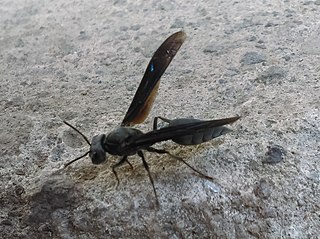
Gymnophthalmidae is a family of lizards with at least 250 species, sometimes known commonly as spectacled lizards or microteiids. They are called "spectacled" because of their transparent lower eyelids, which allow them to still see with closed eyes. As in most lizards, except geckos, these eyelids are movable. The Alopoglossidae have been recently moved from this family.
Heterodactylus is a genus of lizards in the family Gymnophthalmidae. The genus is endemic to Brazil.

The prairie skink is a species of skink endemic to the prairies east of the Rocky Mountains in North America. It is one of only seven species of lizards that occur in Canada.
Frederick Traugott Pursh was a German–American botanist.

The Cuban tree frog is a large species of tree frog that is native to Cuba, the Bahamas, and the Cayman Islands; but has become invasive in several other places around the Americas. Its wide diet and ability to thrive in urban areas has made it a highly invasive species with established colonies in places such as Florida, the Hawaiian island of Oahu, and the Caribbean Islands. These tree frogs can vary in size from 2 to 5.5 inches in length. Due to their large size, Cuban tree frogs can eat a wide variety of things, particularly native tree frogs, and their removal has shown to result in an increase in the amount of native tree frogs in an area. The tadpoles of Cuban tree frogs also heavily compete with native frog tadpoles, which can cause negative effects in body mass, size at metamorphosis, and growth rates for the native tadpoles.

Jainosaurus is a genus of titanosaurian sauropod dinosaur of India and wider Asia, which lived in the Maastrichtian. It is thought to have been about the same size as its contemporary relative Isisaurus, measuring 18 metres (59 ft) long and weighing 15 metric tons. The humerus of the type specimen is 134 centimetres long.

The mink frog is a small species of frog native to the United States and Canada. They are so named for their scent, which reportedly smells like a mink. The scent is more akin to that of rotting onions to those unfamiliar with mink. It is also sometimes referred to as the north frog.
Oreobates heterodactylus, also known as the Caceres robber frog, is a species of frog in the family Strabomantidae. It is known from the semi-deciduous forest of the Precambrian Brazilian shield of western Brazil and eastern Bolivia. It also inhabits the border areas of the Cerrado savanna and the Pantanal wetlands.

The northern sportive lemur, also known as the Sahafary sportive lemur or northern weasel lemur, is a species of lemur in the family Lepilemuridae. It is endemic to Madagascar. As a result of severe ecological and human pressures, the lemur is classified as Critically Endangered (CR) by the IUCN Red List.

The highveld golden mole is a species of mammal in the golden mole family, Chrysochloridae. It is found in South Africa and Eswatini. Its natural habitats are forests, moist savanna, temperate shrubland and grassland, subtropical or tropical dry lowland grassland, arable land, pastureland, plantations, rural gardens, and urban areas.
Parapropalaehoplophorus septentrionalis was a comparatively small species of glyptodont, extinct relatives of the modern armadillo. The mammal, identified in 2007 from the fossilized remains of a specimen found in 2004, weighed approximately 200 pounds and had a shell covered by tiny circular bumps. It lumbered around northern Chile in the Chucal Formation, an area now dominated by the Andes mountain range, some 18 million years ago. Fossils of the glyptodont also have been found in Peru.

Androsace septentrionalis is a species of annual herbaceous plant in the Primrose family (Primulaceae), native to North America, Asia, and Europe.

Castilleja septentrionalis is a species of Indian paintbrush known by several common names, including northern paintbrush, sulfur paintbrush, and pale painted cup. There is taxonomic disagreement as to if it is one species widely distributed in mountain and alpine environments of North America or if there is a second species, Castilleja sulphurea, in the Rocky Mountains.

Myotis septentrionalis, known as the northern long-eared bat or northern myotis, is a species of bat native to North America. There are no recognized subspecies. The northern long-eared bat is about 3–3.7 inches in length, with a wingspan of 9–10 inches. It is distinguishable by its long ears when comparing it to other bats in its genus. This species is commonly found in the northern United States and Southern Canada east of British Columbia. The geographic range includes 37 states.

Morchella septentrionalis species of fungus in the family Morchellaceae native North America. Described as new to science in 2012, it has a northerly eastern North American distribution, where it occurs north of 44°N. The fungus fruits under hardwoods, particularly American aspen and American ash.

Glycymeris, common name the bittersweet clams, is a genus of saltwater clams, marine bivalve molluscs in the family Glycymerididae.

Synoeca septentrionalis is one of five species of wasps in the genus Synoeca. It is a swarm-founding wasp that is also eusocial, exhibiting complicated nest structure and defense mechanisms and a colony cycle including a pre-emergence phase and a post-emergence phase. It is typically found in areas from Central to South America. This wasp is one of the larger species of paper wasps and exhibits multiple morphological adaptations as a result of this. Synoeca septentrionalis is known for possessing a very painful sting.

Chaetodontoplus septentrionalis, the blue-striped angelfish and bluelined angelfish, is a species of marine ray-finned fish, a marine angelfish belonging to the family Pomacanthidae. it is found in the Western Pacific Ocean.

Heterodactylus imbricatus, the Rio de Janeiro teiid, is a species of lizard in the family Gymnophthalmidae. It is endemic to Brazil.
Heterodactylus lundii, Lund's teiid, is a species of lizard in the family Gymnophthalmidae. It is endemic to Brazil.













